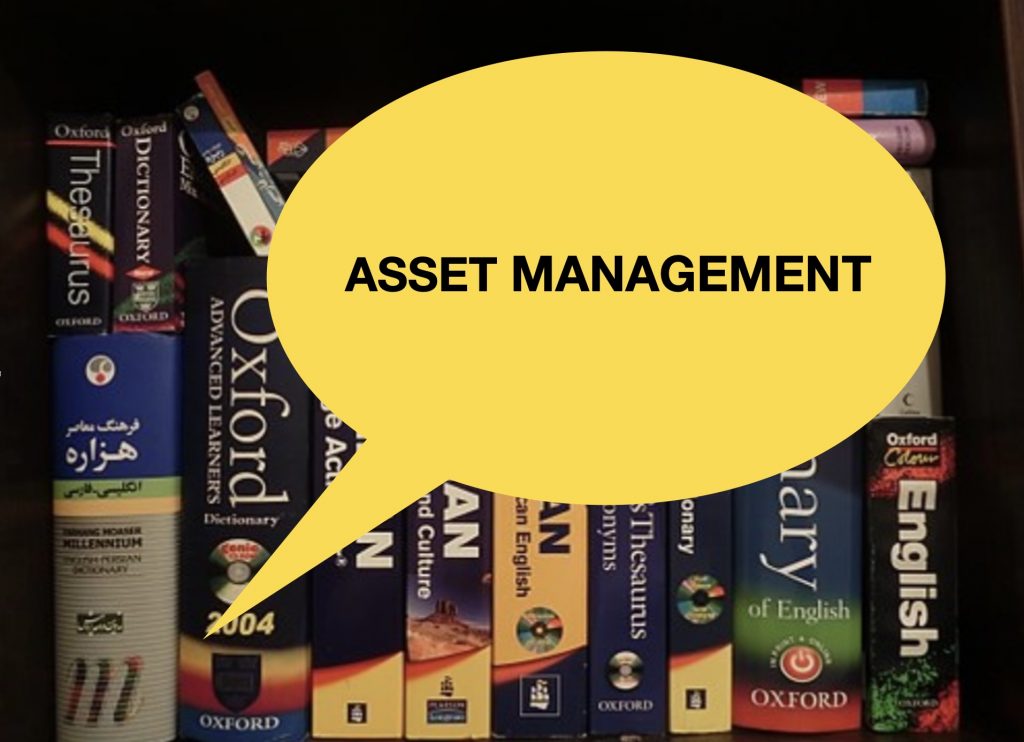
Back in 1987, when the issue of renewing ageing infrastructure was first recognised as important enough by the South Australian Parliament for Asset Management to have its own Cabinet Sub-Committee, there was a lot of enthusiasm amongst the utilities and infrastructure agencies involved. However, with an eye on their budgets, each agency emphasized the immediate need for funds and, to avoid commitment, also emphasized the long term nature of asset management outcomes. The message that came across was that they needed to invest a lot of money now for unknown (but assuredly great!) benefits at some unspecified later date.
I felt that this was very much like saying “I am going to punch you in the stomach now and it will greatly hurt, but when the pain subsides (and I don’t know when that will be), I guarantee you will feel absolutely ecstatic!”
I could not see how this could possibly be a winning strategy, and of course it wasn’t. It was, however, the message that almost all infrastructure agencies across the country were to give in those early years. With pretty much the same results. I had suggested we frame our approach around the changed management and governance requirements that all were now facing but my agency colleagues said this was too difficult. They were right, it was. Yet somehow that is what we needed to do. Actually, what they meant was that it would take too long! They wanted to get their demands in straight away.
Chapter 9 of our Asset Management Story, uploaded today, looks at the early implementation of asset management in the late 1980s.
What has now changed? How have we moved on? Is ‘selling’ asset management any easier, or more successful? Why?

Or managed luck? I have not hidden the fact that an enormous amount of luck has blessed my work in asset management since the very beginning. But is it blind luck, ( just sheer good fortune)? Or did I somehow manage some of it, simply by being dedicated to making things work and being prepared to take advantage of any opportunities that presented themselves?
I have never been inclined to differentiate, just grateful for it all. However perhaps we should consider this for we all have luck (good and bad) and, while we know that we must take responsibility when things don’t work out so well, we are often far too modest about doing the same when things go well. But, surely, recognising what we did ‘right’ as well as what we did ‘wrong’ is equally important for progress?
Today I have posted Chapter 8 about the fortuitous events that made it possible to transit from a research position with the Parliamentary Public Accounts Committee to a position where I could try implementing some of the ideas we had learnt. All 8 chapters are now available.
Now, looking back over your own successes, why not think about why they happened.
And while you are at it, why not tell everybody in the comments below.
It would cheer us up. And we really need to have some good news now.

In the early 1990s asset managers were so absorbed in the culture conflict between engineers and accountants that we gave short shrift to another conflict, that between scientists and management. If asset managers are now to effectively deal with the climate and environmental issues around infrastructure today this is an issue that we need to address. For this, I don’t think that we can do better than start with the excellent article by marine ecologist, Peter Cullen – also dating from the early 1990s.
In this article, Peter looks at the reasons for conflict between scientists and managers and suggests that there are three major reasons why it is difficult for scientists and managers to ‘get on’
- Friction between scientists and managers is often the result of misunderstandings about the culture within which each works.
- Many of the question that both are trying to solve are value questions not scientific ones or management ones.
- Managers often misunderstand science and expect it to deliver a truth that is nonarguable. They fail to understand the very process of science demands no such truths, so that assumptions, methods and conclusions can always be challenged.
He believes that the answer to this problem is to develop a ‘broking role’ – for people who understand both the scientific and management approach to provide a translation.
His argument about managers expecting science to provide a ‘truth that is non-arguable’ is an important one – and those who are currently disputing the ‘truth’ of global warming would be well advised to read and think about this short but powerful article.
However, I want to draw attention to what he has to say about cultures.
Understanding the cultures
“It is necessary to appreciate that the cultures pervading science are quite different from the cultures that pervade management. Without appreciating these cultural differences we will continue to be frustrated at the inadequate communication in both directions. Within professional ranks there are various mind sets inculcated during training and professional socialization. They can be parodied.
- Engineers don’t care why it works as long as they think it does.
- Scientists don’t care if it works or not as long as they understand why.
- Economists don’t care either way if the internal rate of return is OK.
- Managers don’t know unless someone bothers to tell them.
- Planners know how it should have turned out.”
The culture of Scientists
This includes sharing and openness through publication, conference presentations, travel;
honesty limitations of data/evidence;
emphasis on peer review;
organized scepticism;
peer rewards from quality of insights, experiments, analysis;
peer rewards for ability to select appropriate problems that have intellectual difficulty rather than immediate usefulness;
low status of data collection unless it is to test some hypothesis;
higher status for explanatory theories over empirical models;
some independence about what problems scientists will work upon.
The culture of management
- Managers have as their goal the delivery of benefits to some group. These might be abstract or generalized (policy) or specific (service delivery).
- Managers make decisions in order to reduce risks and they make pragmatic decisions to try to achieve this.
- Decisions are normally made with imperfect information and there is little pressure to review subsequently the assumptions in the light of effectiveness.
- There is often pride in the ability of managers to make decisions with little knowledge, and a culture which does not encourage quantitative evaluation and accountability.
- Technical skills are not directly valued in organizational hierarchies, and professionals have to become managers if they seek advancement to higher levels.
The Source of Conflict
Science is valued as a weapon in the ongoing conflict with other interest groups or agencies for power, influence and resources. Scientific outcomes, and the kudos of success, may be less important than staking out the turf to keep other players at bay. Public sector management appears to be undergoing a paradigm shift at the moment, and so there are two conflicting models.
(a) The bureaucratic model. The bureaucratic model has rules that are made to be followed. Following procedure is more important than particular outcomes. These systems are characterized by due process and formal procedures, rule books, secrecy and avoidance of performance review. The system rewards rule conformity, error avoidance and attention to detail.
(b) The managerial model. The managerial model is characterized by quantifiable outcomes that are more important than following set processes. Services are seen as products to be delivered to customers. There are devolved responsibilities within an externally set cost framework, and managers are assessed through cost-effectiveness reviews. Hence economic rationality replaces the legal and procedural framework of the bureaucratic model. The organization is seen as a tool in the hands of the executive manager or Minister, and is responsive to short-term political agendas. Rewards are for achieving output targets and nonachievement may be punished. Creates an environment where there must at least be a facade of progress, so if a problem is intractable there will be attempts to abandon it so at least the impression of progress can be created by moving on to new and relevant problems” .
What action do we need to take?
As Asset Managers we often get frustrated and annoyed when our ideas of what needs to be done runs counter to what others want to be done. Unfortunately a common response is to consider the others wrong, ignorant or even malicious. But let us first understand what they need to do to achieve their desires and see if we can’t work together.
Your comments?
If you have science colleagues, please share this with them for their ideas for a joint solution.
Footnote; Peter Cullen “The turbulent boundary between water science and water management”. Freshwater Biology, Vol 2. Issue 1, August 1990. He was described as ‘provocative, constructive, brave and always grounded in good science’. Peter was an Adelaide ‘Thinker in Residence’ in 2004. Sadly, he died in 2008. His ideas, however, live on.

The continuing story of Asset Management. It is 1987 and reactions to AM information are mixed.
There was the horror of a board member of the Adelaide Hospital who, when he saw the extent of their future renewal costs, declared “My Goodness, we cannot let the board see this!” A too common response amongst those responsible for management, unfortunately.
But the Under-Treasurer was thrilled when the credit rating agencies saw the asset replacement values as indicative of the State’s wealth (ignoring our future renewal costs), and so we were able to keep our AAA rating.
In Chapter Seven of our Asset Management Story, “Reactions”, I look at the initial impact of the work of the Public Accounts Committee.
There must have been something in the ether in the mid 1980s for, almost simultaneously, major reports on future infrastructure costs were released in the UK, the USA and Australia. But Australia was the only one to focus on managing the costs.
In the UK the focus was on advising the Government of the size and costs of future infrastructure growth. In the USA, the ‘Fragile Foundations’ study included renewal, expansion and upgrade but with insufficient detail to enable these elements to be disentangled.
The aim [of the American study] was to make the figure as large as possible to convince politicians to take the matter seriously. (Later I was to meet with one of the authors of this report, an MP, and when I talked about how we might improve infrastructure decision making, she reacted negatively “If we can’t get the capital projects we want, it wouldn’t be worth going into politics!”)
Earlier I had observed that many in Australia thought that America would surely have discovered and dealt with the asset management problem ahead of us. Well, they certainly had discovered the problem. But they hadn’t dealt with it. And the reason for this is, I think, quite interesting.
America, as a rich country, was used to dealing with problems by throwing money at them, so their focus on the costs alone probably made sense. Australia, on the other hand, had no such illusions. We didn’t expect money to be easily forthcoming and knew that we would need to present a well documented case if this were to happen. We also knew priorities would need to be set. So our focus on management was understandable.
To see more, Chapter 7 has been uploaded today and Chapters 1-7 are now available at
https://talkinginfrastructure.com/the-asset-management-story/
“Have you looked at what the UK and the USA are doing?” Whenever I talked with others about our work in asset management during those early years with the Public Accounts Committee, 1985-1987, this question would commonly be voiced, generally in the tone of ‘Surely others have already done this’. But they hadn’t. One of the hardest tasks was overcoming this Australian cultural cringe. We simply couldn’t conceive of ourselves being in the lead in anything – except Sport. And yet, when it comes to asset management we have led the world. Both the UK and the USA learnt from us! How did this come about?
Nevertheless, New York was very helpful when it came to getting our message across. It became an object lesson for what might befall us if we did not get our heads around Asset Management. How come?
The answers – and many interesting New York stories – can be found in Chapter 6 of our continuing story of the development of asset management: ‘How to contain costs, asset management proper begins’.
Chapters 1-6 of our story are now available
In earlier chapters we looked at how asset management had developed from an observation that we didn’t know what it cost us to supply irrigators with water, to the more serious question that we didn’t know what it cost to supply all South Australian residents with any of their water and sewer services. In the effort to fill this information gap we made the happy discovery that our approach could not only determine what the current cost was but it would also allow us to estimate the likely future cost – and the timing – of asset renewal. We were on a roll!
Our work spread rapidly to other water authorities in the country, and shortly after, overseas. It also came to the attention of the Parliament and to their standing sub-committee, the Public Accounts Committee. In Chapter 5 we take a detailed look at what it took to expand our work to all the major state infrastructure agencies in South Australia – starting with the State Housing Commission, and moving on to water and energy, highways, hospitals, transport, and schools and colleges. So read on with Chapter 5 – Asset Management Widens its Scope.
And if you haven’t yet read Chapters 1-4, you will find links to them here in our last blog post.
How many times in your career have you made a change and moved on from one position to another? Probably many! Was it with relief, anxiety, excitement or something else?
When I decided to write the story of my first ten years in Asset Management as a prelude to the stories of many others over four decades, I realised that there were two stories I could tell, the story of AM development and my own personal story. At first, I thought the two should be kept separate for this seemed to be the more ‘professional’ approach. However the more I wrote, the more I realised that this was simply not possible. What is more, as I talk to others, it is not possible for them either. How do you separate your passion from the object of that passion?
So I gave up on the idea of separating the two and framed the story of ‘Asset Management as a Quest’ around the questions that I found myself asking. Each answer not only yielded more questions but it also presented new opportunities, new avenues to explore for yet more answers – and more questions! This, naturally, meant taking up new positions, or “moving on”
None of these moves was easy and the first I was to resist like crazy before eventually realising the enormous possibilities it presented. This is the story that I tell in Chapter 4 “Moving On” which I have uploaded today.
You can now access all four chapters of Part One: ‘The E&WS Years’:-
Chapter One, How Asset Management Started, Chapter Two, Looking Ahead (or predicting the cost and timing of asset renewal), Chapter Three, Reactions (where I look at how others reacted to the changes we were making) and Chapter Four, Moving On
NOW YOUR STORY!
Others tell me that as they read my stories, they remember events on their own learning path; stories of the first time they learnt something new that they now take for granted, or events they now look back on with a wry grin. This is the collective learning that Talking Infrastructure is looking to publish, both for those new to the field and for those ‘who can remember’.
The next three volumes cover the periods 1994-2003; 2004- 2013, and 2014 to 2023 respectively so no matter when you became part of the AM community, you can be part of its story. If you have something already written, great. If you are not quite sure and would like to talk about it, you can text me on 0434 406 751 or email me at penny@talking infrastructure.
I am looking forward to hearing from you.
Penny

Almost 40 years ago I accidentally found myself asking how we could manage our assets better. It became an all absorbing passion, always changing, ever expanding. And now Talking Infrastructure is giving me the opportunity to tell my story in ‘Asset Management as a Quest‘, the first volume in what we plan to be a 4 volume study involving the stories of many leading practitioners over the last 4 decades.
We are producing it as a serial, which is appropriate, as you will see, for Asset Management itself developed as a serial, a bit at a time, over time. Available now are the first chapters of Volume 1 ( Asset Management as a Quest): Chapter 1 which looks at how an innocent remark by one led to a lifetime of inquiry by many, Chapter 2, where we realise we can actually foretell the future (well, at least a bit), and, added today, is Chapter 3 where we look at some of the initial reactions to the changes implied by those early stages of asset management.
Here is how Chapter 3 begins – but it is better to start at the beginning with Chapter 1.
“The right time and place“
Had I tried to do this exercise anywhere else than with the EWS, I am now convinced it would not have seen the light of day. I would have been blocked by those who foresaw their current situation changing, and changing in ways they could not control.
Chief amongst these was Finance, as was later to be confirmed by the reactions of the State Treasury. There really was nothing in this exercise for Finance. They were comfortable with the way things were, they knew what they were doing, and they had ‘the power of the purse’. What I was proposing was going to shake things up.
Finance has a short term focus, mostly concerned with this budget year and next year’s budget bid. Fortunately, in the EWS, engineers were dominant and they were able to take a longer term view. They were excited to realise that their asset portfolio was so big – and thus important! So, regardless of personalities, it was natural that I would get more support from engineering than from finance. But, of course, there was more involved. There always is.”
Aneurin Hughes, Cardno, asked me this question at AM Peak last week.
It got me thinking and I realised that I never had an expectation, or long term vision, and I still haven’t. If it was hard to see the future back then, it certainly hasn’t got any easier now.
And yet, without any formal long-term planning, we have made incredible strides. Which is what makes looking back to where we started so fascinating.
I had certain things I believed in – that we needed to know WHAT we were doing, WHY we were doing it, and how much it was COSTING us – for these were necessary to make sensible decisions. These were basic so I was surprised to find so little attention to them when it came to infrastructure.
Today these same questions still apply – but now we are able to tackle them in far greater depth and complexity. And I think that ability (and the desire to apply it) is what has changed the most over the last almost four decades. Once we thought of WHAT in simplistic physical and immediate terms, now it embraces the impact we have having on the environment and on society now and into the future. The WHY question which used to be ‘what’s in it for us’ where the ‘us’ was the supply organisation, now looks further and is forcing us to have a greater understanding of the role of infrastructure beyond its mere ‘job creation’ aspects, to consider the myriad ways in which infrastructure interacts with the way we ‘live, work and play’.
The question of COSTS is perhaps the most controversial one we are dealing with today. Initially we knew almost nothing and a lot of the early development of AM focused on understanding this better. At first we just looked to the financial cost to the supply organisation and ignored those external costs that fell on users, or on the community – both now and future. These are now, at least, being discussed, but we still have some way to go before we make the necessary institutional changes that will enable the issues being discussed to be implemented. In the meantime, so many incentives remain counter-productive.
So my answer to Aneurin was, of course, ‘No’, because I had no theoretical long term vision. Instead my approach to AM was more pragmatic, more incremental, I just tackled the next problem that I could see.
QUESTION: Do you have a vision? If so, what are the next steps on the way to achieving your vision?
We have uploaded Chapter Two of ‘Asset Management as a Quest’ today.
It is now almost 40 years since Asset Management started. To celebrate, Talking Infrastructure is producing a history of the development of our discipline, now a recognised industry and moreover one for which there is excess demand.
‘Asset Management as a Quest’ is the first in this four volume series and it covers the period from 1984 to 1993. While future volumes, each covering one decade, will call on the ideas, experience and stories from many leading practioners, the first volume is told by Dr Penny Burns, and it is the story through her eyes.
Part One, consisting of 4 chapters, was first published in July 2021. It is now revised and we will be presenting the whole volume, all 20 chapters, one chapter at a time each fortnight. You can find the first chapter, ‘How Asset Management Began’ here.
Information on how you can be part of Volumes 2-4 coming shortly – so, if you have not yet joined Talking Infrastructure (it’s free!) do so, and you will be the first to be advised.

Recent Comments